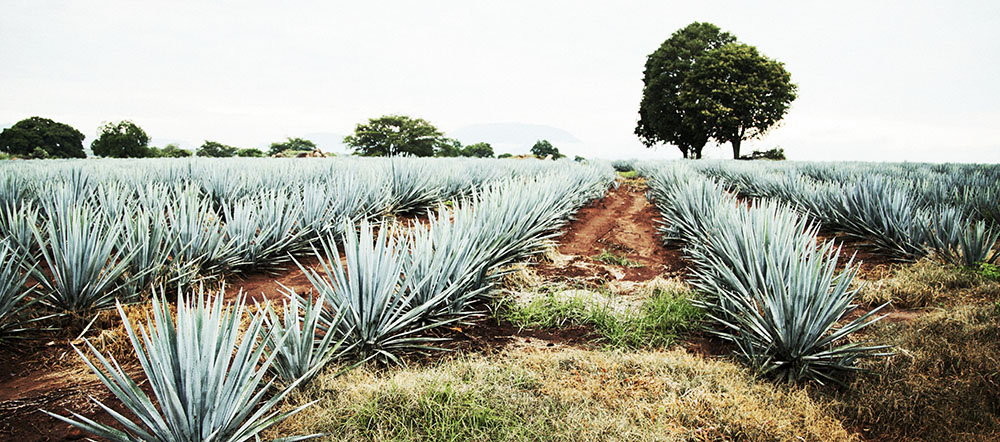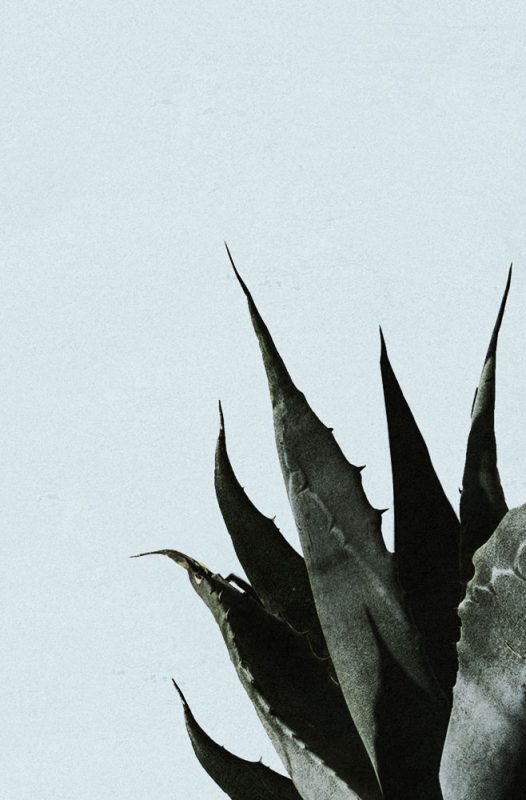Raicilla flies under the radar

Last year, Casamigos, the tequila company famously founded by George Clooney and friends, launched its first mezcal. Agave purists will almost certainly scoff at this development, despite the fact that most anybody who gives this product a fair shot would have to agree it’s delicious — an expertly balanced blend of robust fruit, light smoke and herbal notes.
Some might go so far as to take this as the final sign that mezcal has fully jumped the shark and gone mainstream. They might even suggest that it’s time to move on to raicilla, another white spirit from Mexico that’s been tapped as the next big thing in agave.
Never heard of it? Don’t worry. It’s not you, it’s raicilla, an under-the-radar spirit made in the state of Jalisco from cooked, fermented and distilled agave hearts. That’s pretty much the same way tequila and mezcal are produced, albeit with different varietals and production methods according to regional denomination rules. And, unless you’ve been to Puerto Vallarta, where it’s common for shopkeepers to offer customers a shot of raicilla to seal a deal, it remains a pretty obscure product. It appears, occasionally, in the coolest agave-centric cocktail bars in cities like Los Angeles, Mexico City and London, England, but, aside from that, it’s typically a 100-mile drink.
For now. As the never-ending quest to find the most “authentic” liquid from Mexico makes its way through various agave-producing regions, it seems likely that funky-tasting raicilla will soon be dubbed the “new mezcal,” which, if you recall, was the “new tequila” not so very long ago. It’s the agave circle of life.
“Right now, it’s huge — huge,” says Kevin Simpson, a former Torontonian-turned-art-dealer at Galeria Colektica in Puerto Vallarta. “Tequila has become so much more of a manufactured product, raicilla has a smoky, homemade flavour. It’s sort of like artisan beer, so it’s becoming much more popular with people who like to taste things that are handmade, in small production, on family farms.”
Simpson says he still buys his raicilla from moonshiners who operate in the backwoods — in unlabelled and untaxed bottles that he keeps under the counter in his gallery to share with special clients. That moonshine, though, still represents a quality revolution compared with the old days, when he used to buy it from a guy at the side of the road who sold it in an old plastic water bottle. “It’s kind of lost a bit of that Wild West feel,” he laments, “but the product is better now. You can drink it. You can sip it.”
 Indeed, you can. It’s offered as a digestif in Puerto Vallarta’s best restaurants these days and the leading artisanal brand, La Venenosa, has three distinct and highly sippable expressions — a Costa (coast), Sur (South) and Sierra (highlands) — and two of the three picked up medals at the 2018 Berlin Craft Spirits Festival. The brand’s founder, Esteban Morales Garibi, is trying to establish these expressions as regional differentiations and, no question, his expressions have markedly different flavour profiles. Sur is earthy and pungent, Costa is smoky and vegetal and Sierra is bright and fruity.
Indeed, you can. It’s offered as a digestif in Puerto Vallarta’s best restaurants these days and the leading artisanal brand, La Venenosa, has three distinct and highly sippable expressions — a Costa (coast), Sur (South) and Sierra (highlands) — and two of the three picked up medals at the 2018 Berlin Craft Spirits Festival. The brand’s founder, Esteban Morales Garibi, is trying to establish these expressions as regional differentiations and, no question, his expressions have markedly different flavour profiles. Sur is earthy and pungent, Costa is smoky and vegetal and Sierra is bright and fruity.
Don’t expect these micro-climate classifications to hold across the board for every raicilla, though, since the use of a large range of varietals (often wild) and unbelievably rustic production methods (which often make use of either wood or clay in the distillation process) is akin to an entire deck of wild cards being thrown at you.
That variety is part of the appeal, of course. Variety is what drove artisanal mezcal, which was first successfully exported by Ron Cooper, an American artist who curated different liquids from different towns around Oaxaca and patiently explained his Del Maguey Single Village expression series to Canadians and Americans for, oh, about 15 years, until, one day, it just seemed to catch on. And that’s when everything went crazy.
Suddenly, every bartender was trekking to Oaxaca and coming back with the opinion that, save for a few boutique tequila brands, mezcal was the true taste of Mexico — and its terroir. Everyone from Toby Keith to Pernod Ricard wanted to own a brand, and cocktail bar owners, frustrated by a lack of availability, actually flew to Oaxaca and sourced their own custom-bottled expressions. A lot of people started wondering how, back in the “old days,” they could ever have suffered through drinking that “terroir-less” tequila.
Except for one thing. A lot of that tequila was actually pretty delicious. Once we learned to walk past the “gold” abominations (often agave diluted with sugarcane spirit and added colour) and choose, instead, the well-crafted, pure agave expressions that started to appear in Canada in the early 2000s, we discovered a sophisticated, clean, crispy and citrussy spirit with, dare I say, plenty of terroir characteristics.
If the idea of terroir in spirits makes any sense in the first place, all premium agave spirits — tequila, mezcal and raicilla — should qualify as terroir spirits, since, even the most diplomatic tequilas could never have been mistaken for a neutral grain spirit. Tequila isn’t subjected to multiple passes through a 32-plate column still and, what’s more, the better producers keep it small, deliberately. At Patrón, for example, as the production increases, instead of buying larger equipment, they clone the fermentation and distillation systems, ordering new pine fermenters and alembic stills — all the exact same size. Instead of scaling up, they replicate the process over and over again, building the distillery outwards. Hardly the most economically efficient approach.
But, what’s interesting about Patrón is that, alongside this colony of micro-distillery-sized equipment laid out in rows, ostensibly to keep the flavour profile the same forever, are a plethora of new expressions, all of which seem to be coming out in response to the terroir challenge posed by mezcal and raicilla. Last year, the company launched a “Smoky” Patrón tequila and, a few years before that, a premium “Roca” line, liquid made entirely from the pre-industrial, traditional tahona process associated with mezcal — where the use of a two-tonne volcanic stone leads to a pulpier mash for fermentation. Patrón always had some tahona liquid, but the Silver is a blend of traditional and modern, roller-mill-processed spirit. And, sort of like the way a guacamole made in a molcajete is tangibly better tasting (even if it’s hard to pin down what tastes better about it), the Roca expressions have a discernibly more vibrant and robust flavour profile.
Patrón isn’t the only producer re-inventing itself. Moët Hennessy recently acquired a tequila hacienda and started making Volcán De Mi Tierra tequila, launching with two styles — a “Cristallino” and a tahona-heavy “terroir” blanco. Volcán is a leader in the Cristallino micro-category, a new style of tequila that sees it aged in oak (ex-Glenmorangie casks, in the case of Volcán), then filtered so that all but a trace of the colour and flavour imparted by the wood is removed.
Unlike your average añejo, which generally tastes like the caramel and vanilla it soaked up from the wood, this is an aged tequila with a little more density and depth of character, but without the confectionary flavours that get in the way of the sweet, earthy and distinct agave characteristics. Not to mention the terroir, be it the red soil of the highlands or the brown, volcanic soil of the lowlands. Volcán, incidentally, is a blend of both, whereas Patrón is strictly from los Altos (“the highlands”).
“I want to be able to taste the floral and herbal notes in a spirit, which is why we filter,”
says Adriana Baca, who was the project manager and driving force behind Moët Hennessy acquiring a hacienda and getting it set up to make Volcán tequila. “It’s also why I have some problems with mezcal. The first problem is that not every mezcal is a great quality. But more than that, I just find that, with too many mezcals, all I can taste is smoke.”
It’s a fair point. One that applies to some raicilla as well, thanks to the use of wood-fired roasting at many mezcal and raicilla operations. And it can be hard to appreciate the fruit, herbs or cooked fruit through intense smoke — just as it would be with a lot of oak. And hey, smoky spirits are delicious, as is butterscotch. But can they really be considered terroir-driven at that point?
This battle over terroir is where we find ourselves in the constantly evolving, wildly dynamic world of agave spirits. And, in my view, no one category owns it. Instead, like low-intervention wine, it’s about production differences, which we now see playing a major role. OGs like Patrón are playing with wood-fired roasting; mezcals are starting to edit the smoke; raicillas are getting more refined and new boutique tequilas are even inventing new categories, like Cristallino. The changes aren’t coming from the top down, it’s a maze of influences that would be a nightmare to turn into a flow chart.
Since he’s uniquely qualified to know, I asked Francisco Alcaraz, Patrón’s master distiller, about the changes in the industry. Not only did Alcaraz develop Patrón’s tequila in 1989, he worked as an industry inspector in the late 1960s, meaning that he has had a bird’s-eye view for half a century. “Let me tell you that I consider that there is the tequila industry before Patrón and another industry after Patrón,” says Alcaraz. “We have influenced the industry in many respects. We have improved the tequila industry.
“I started Patrón because Martin [Crowley] phoned me and asked, ‘Can you produce the best tequila in the world for me?’ and I said, ‘No, I cannot say that. I cannot say it will be the best in the world. But I can promise you I’ll make the best tequila I can produce.’ He said, ‘Okay that’s enough for me.’”
As braggy as it all may sound, we can’t deny Patrón shaped the industry. But if we’ve learned anything, it’s that it’s also an oversimplification. The industry changes every time anyone — be it Esteban Garibi, Ron Cooper, Francisco Alcaraz, Adriana Baca or, God help us, George Clooney — has a new vision for how the spirit can best express the terroir and makes (or sources) a product that is their own personal best.
These new milestones push everyone to try new things, making the industry more dynamic and inventive. And, right now is possibly the most interesting time, in the history of the spirit, to be drinking agave.
